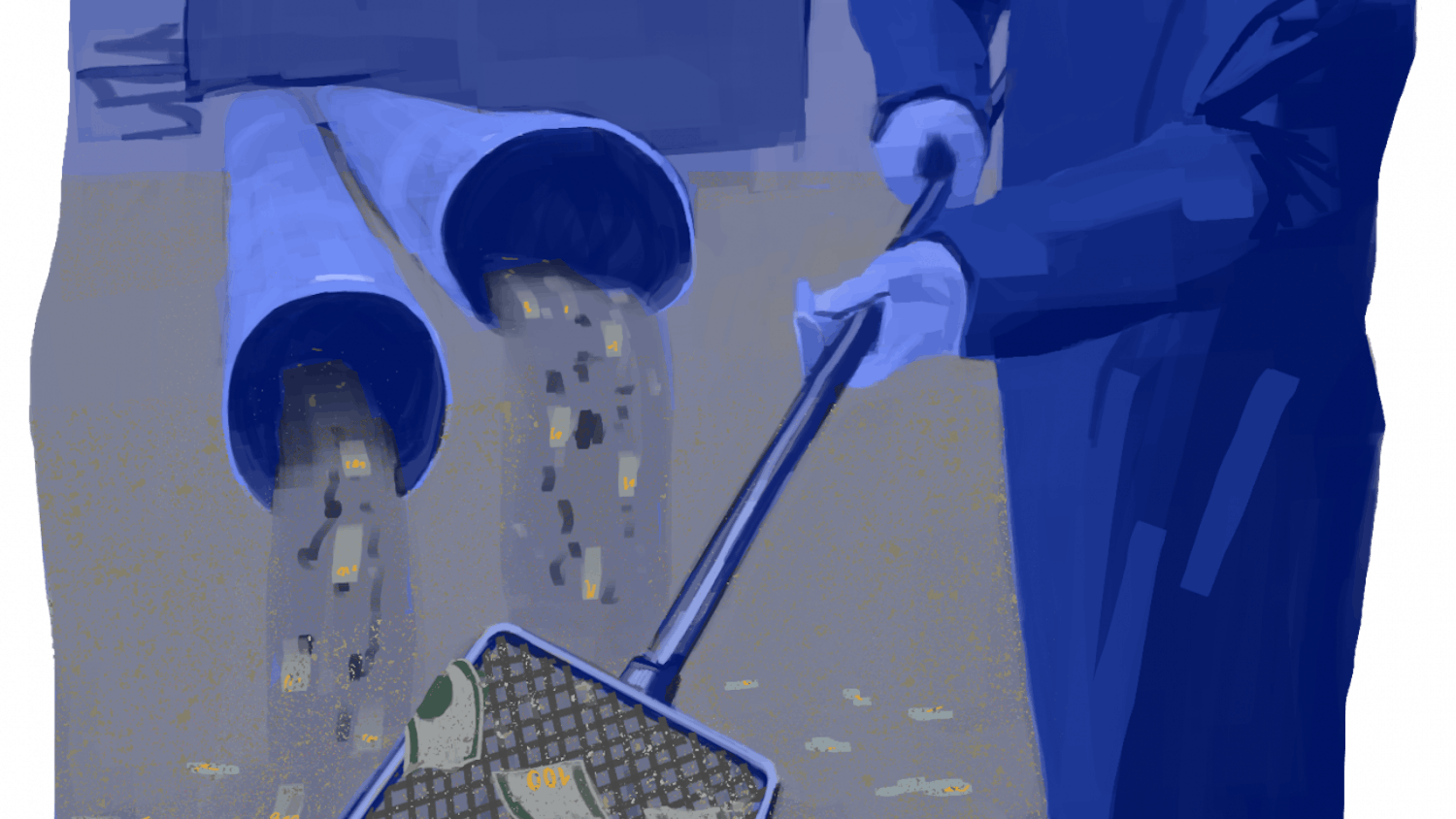Krysta Ryzewski, postdoctoral fellow in archaeology, and her class meet every Monday afternoon on the lawn of the John Brown House — to dig.
The class, ARCH 1900: "The Archaeology of College Hill," aims to bring archaeology home, looking deeper at the sites on the Brown map. Class begins as the students walk across Power Street, clad in Wellington boots with shovels in hand. Once they reach the site, they quickly get to work on square patches of dirt. What initially seems like random digging soon reveals itself as a very serious task, as students begin their arduous calculations and decide where and how to dig.
Under the watchful eye of Ryzewski, students sift and shift dirt in an excited search for anything left over from history. Though the three patches of dirt may seem haphazardly placed, they were chosen very intentionally.
Beneath one patch lie the remnants of a 19th-century fountain from the Robert Hale Ives House. Beneath another lies a wall that had not appeared on any maps yet and was — the class believes — a previously undiscovered outhouse of the John Brown House.
The class is not without its challenges, whether they be hacking at giant, intruding roots, attempting to decipher what a mysterious black piece of rock is or avoiding skunks in the tool shed.
When a tiny, seemingly irrelevant shard of white ceramic was found among the clutter of rocks and roots, it caught the attention of everyone in the area. After an initial inspection, the piece of ceramic was put aside for later analysis.
"I love when I find things," said Olivia Petrocco '13. "It is exciting when it actually means something. You know it was worth it!"
"This class gives you a really tactile connection to the past," Petrocco said. "They had bricks and we have bricks, things like that."
The class is exploring different periods of history dating back to the 1700s and occasionally even earlier. Brown is located in an "important area of New England, which dates all the way back to prehistoric times," Ryzewski said.
The class aims to help the John Brown Museum — which is mostly concerned with the time of John Brown, a co-founder of the University — "to understand the broader history" of the house, she said.
The class's work will highlight the many different owners of the house, including the Brown family, and the changes they made to the house.
Another aim of the project is to find "certain groups of people that history has failed to record," such as staff, women and children, Ryzewski said.
The work is very "hands-on," said Jenneth Igbokwe '11, and "requires a lot from me physically, but we have made several discoveries."
The students all recommended the course, calling it a lot of fun. Though many said it requires a lot of work and is physically demanding, they said it provides great hands-on practical experience.
During Family Weekend, the dig will be open from 12:30 to 3 p.m. on Saturday. This isn't your typical meet-the-teacher activity — passersby may even be able to take part in the digging.




